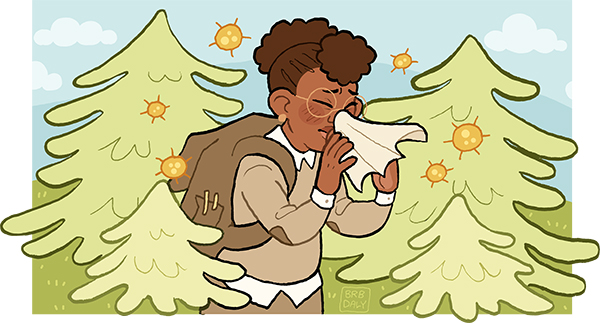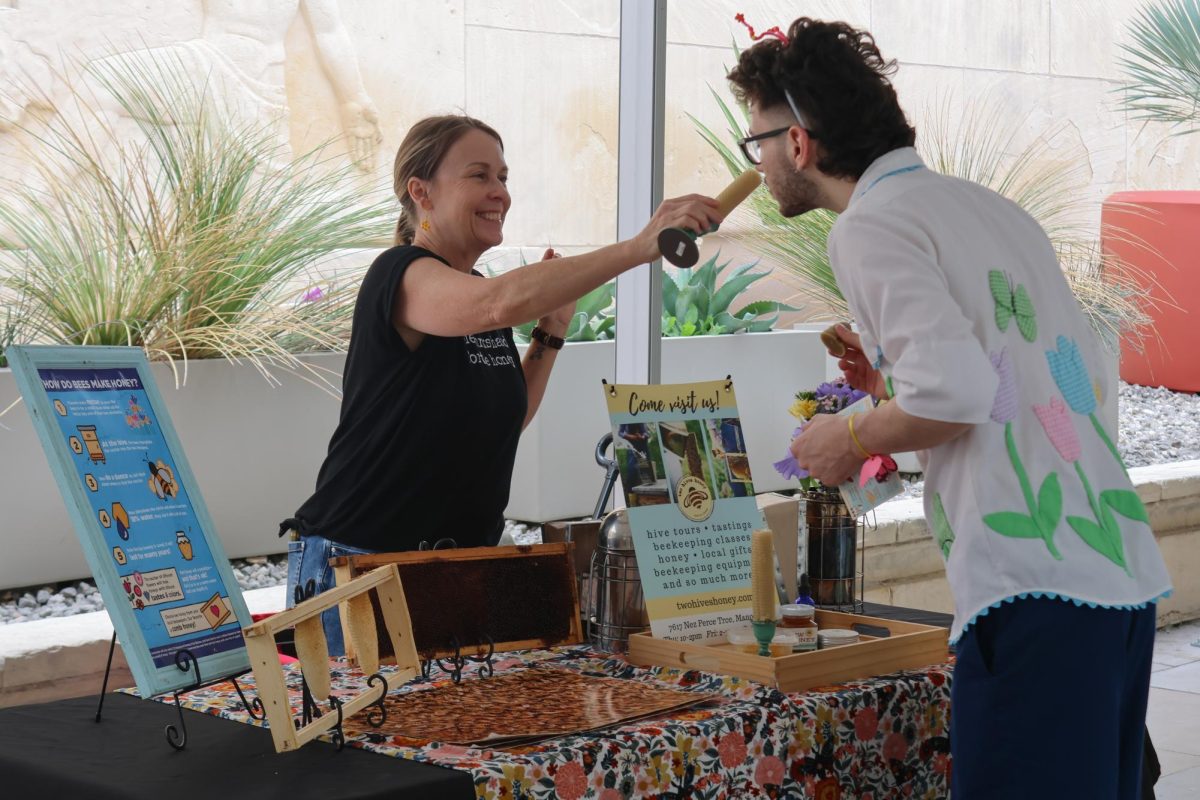From December to March, Central Texas’ juniper trees spread pollen, causing Austin’s residents to experience allergic reactions.
“We call it cedar fever because you can feel so bad that it almost feels like you’re sick and not just having allergies,” said Terrance Hines, University Health Services chief medical officer and executive director.
During this time of year the juniper trees release pollen into the air, triggering allergies in residents, especially those who are new to Austin. Common symptoms of cedar fever include runny nose, coughing and headaches, Hines said.
Denisse Meza, a speech language pathology graduate student, said she experiences an itchy throat, watery eyes and constant sneezing every season, particularly starting in December. Meza said she did not start having allergies until she moved to Austin.
“I drink teas (and) I try not to sleep with the fan on,” Meza said. “But I had never heard about cedar fever (before).”
Meza said her allergies were not too strong and usually did not prohibit her from coming to class. She said she does not know if her allergies are caused by the pollen.
To prevent allergies, people should try to reduce exposure by bathing pets frequently because they often bring in pollen, getting over-the-counter remedies and using air fresheners, Hines said.
Hines said people experiencing allergies should take an over-the-counter antihistamine and nasal saline rinses. If home remedies are unsuccessful, they may want to be seen at the clinic, Hines said.
“We definitely see an uptick of cedar fever allergy complaints in the late fall, early spring time frame,” Hines said. “It can be confusing sometimes because this is also the peak of cold and flu season. So we have to make that determination: Is this an allergy or is this an infection?”
Advertising senior Kiana Fernandez said she usually experiences allergies at this time of year when she comes back to Austin from her hometown, Dallas. She gets an itchy, sore throat, becomes congested and sneezes a lot. Fernandez said she had not heard of cedar fever before, but she thinks it might be the cause of her allergies.
“I use over-the-counter medication to treat (myself),” Fernandez said.
Hines said in some cases, nasal or oral steroids are appropriate, or antibiotics if they have an infection. In some cases, Hines said, students who have cedar allergies can get allergy shots as part of a desensitization program. Hines said students interested in receiving the shots would have to see a community allergist first, and then could receive shots in the UHS clinic.
Bad allergies can cause a bacterial infection such as sinusitis, which can cause a fever, Hines said. If someone’s temperature is greater than 100.4 degrees Fahrenheit, they may have an infection and should seek treatment, Hines said.
Hines said if students have questions about whether they should come in and be seen, they can call the UHS Nurse Advice Line at 512-475-6877.
“Some people are just more sensitive to allergies in general,” Hines said. “But anyone who has chronic respiratory conditions like asthma, cystic fibrosis or someone who has a problem with their immune system (are) more prone to an infection (and) would be more likely to develop complications of having allergies.”





















